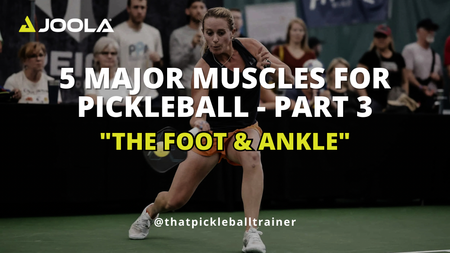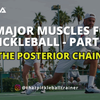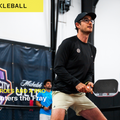
Dancing on Air: Unveiling the Role of Foot and Ankle Muscles in Elevating Your Pickleball Game
Introduction:
Pickleball demands not only swift moves and fast hands but also a keen awareness of the unsung heroes beneath you – your feet and ankles. In this exploration of the intricate world beneath our ankles, let's discover how nurturing these often-overlooked muscles can be the game-changer you never knew you needed.
Happy Feet and Ankles:
Ever found yourself wincing from pickleball foot pain or nursing a sore ankle after an intense match? You're not alone. The foot and ankle muscles play a pivotal role in your pickleball performance, absorbing impact, providing stability, and enabling those lightning-fast directional changes to get to every ball.
You want to keep your feet happy. Happy feet = happy pickleball. The stronger your lower legs are as a whole, the less susceptible to injury you are.
Understanding the Culprits: Pickleball Foot and Ankle Woes
Before we embark on our way to happy feet, let's address the common culprits – foot and heel pain, ankle sprains, achilles sprains, and the notorious pickleball plantar fasciitis. These discomforts often rear their heads due to the repetitive movements and sudden bursts of speed inherent in the game.
Pickleball is often compared to tennis - one major difference in pickleball is the length of rallies. IT isn’t uncommon for a rally to go on for well over a minute! During that time, the movements are short, rapid, and in multiple directions. The feet need to be prepped for this kind of wear and tear.
Transitioning smoothly from acknowledging the challenges, we set the stage for a proactive approach to preventing pickleball ankle injuries and minimizing pain.
Preventing Pickleball Ankle Injuries: A Strategic Approach
The first step in ensuring your foot and ankle muscles are up to the pickleball challenge is prevention. Think of it as laying a solid foundation for your pickleball fortress. Incorporate targeted warm-up routines that focus on gentle stretches and rotations to awaken and prepare the feet and calves for action.
Transitioning seamlessly into the prevention game plan, let's delve into the importance of proper footwear. A pair of shoes that provide adequate support and cushioning can be a game-changer, reducing the impact on your feet and ankles. This is a very important piece of the puzzle that is specific to each athlete’s foot profile. You should make decisions based on foot width, arch height, and durability.
Pickleball Plantar Fasciitis: A Sneaky Foe
Pickleball plantar fasciitis, often a silent killer, can sneak up on even the most seasoned players. This condition, characterized by inflammation of the tissue connecting the heel bone to the toes, can lead to persistent heel pain. But don’t worry – awareness and simple exercises can be your allies in preventing and treating these issues.
Transitioning smoothly into the realm of treatment, we explore the wonders of stretches targeting the plantar fascia. Simple toe stretches and calf stretches can provide much-needed relief, aiding in the recovery and preventing future flare-ups.
IF you are looking for a foot and ankle strengthening routine, check out the video below!
Elevating the Game: Foot and Ankle Exercises for Pickleball Prowess
Now, let's shift our focus to the proactive side of the equation – exercises that strengthen and support your foot and ankle muscles, transforming them into powerhouses of stability and agility.
Transitioning seamlessly into the exercise routine, we introduce the calf raises, a versatile move that not only strengthens the calf muscles but also stabilizes the ankles. These can be easily incorporated into your warm-up or cooldown routine, contributing to the overall health of your lower limbs.
Other exercises include: Ankle CARS, Soleus Raises, Toe yoga, ISO split Squats w/ floating heel, pogo jumps, hops, skips, sprinting
Treating Pickleball Pain: Listen to Your Body
If pickleball pain persists, it's time to listen to your body. Don't ignore the signals. You should look to follow the P.E.A.C.E. & L.O.V.E. acronym: Protect, Elevate, Avoid anti-inflammatory medication/ice, Compression, Educate, Load, Optimism, Vascularization, Exercise. Seeking professional advice and incorporating targeted physical therapy exercises into your routine can be a game-changer for chronic issues.
Transitioning smoothly into the concept of active recovery, we highlight the importance of rest and self-care. Your body is your greatest ally on the pickleball court, and nurturing it ensures a long and enjoyable journey in the game.
You're Not Alone
Many athletes, especially at the professional level, have publicly noted that they were setback due to plantar fasciitis. At the professional level, players like Tyson McGuffin, Catherine Parenteau, and Anna Leigh Waters have dealt with plantar and foot pain. Pickleball is hard on your feet, treat them nicely and strengthen them.
For more information on Pickleball-related injuries, visit C2performance.co




